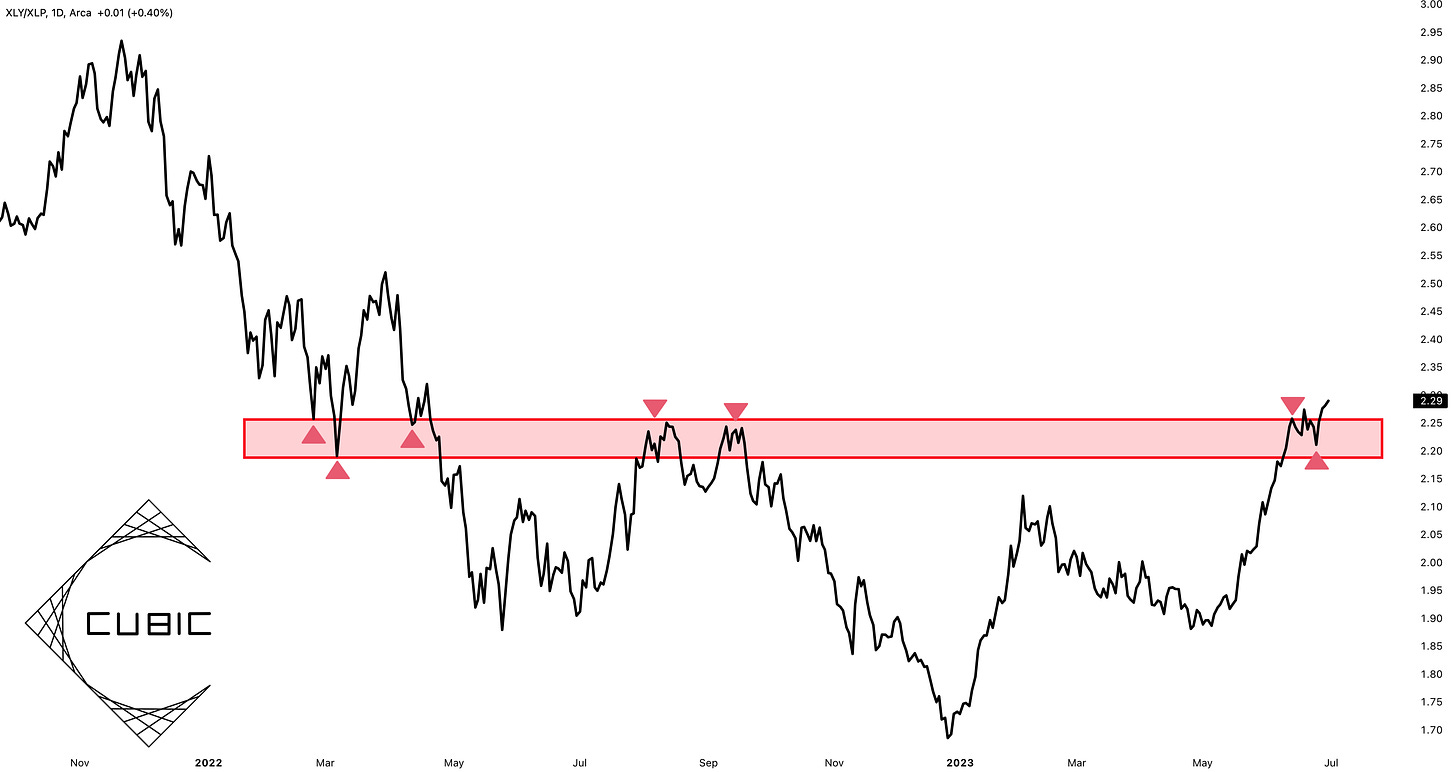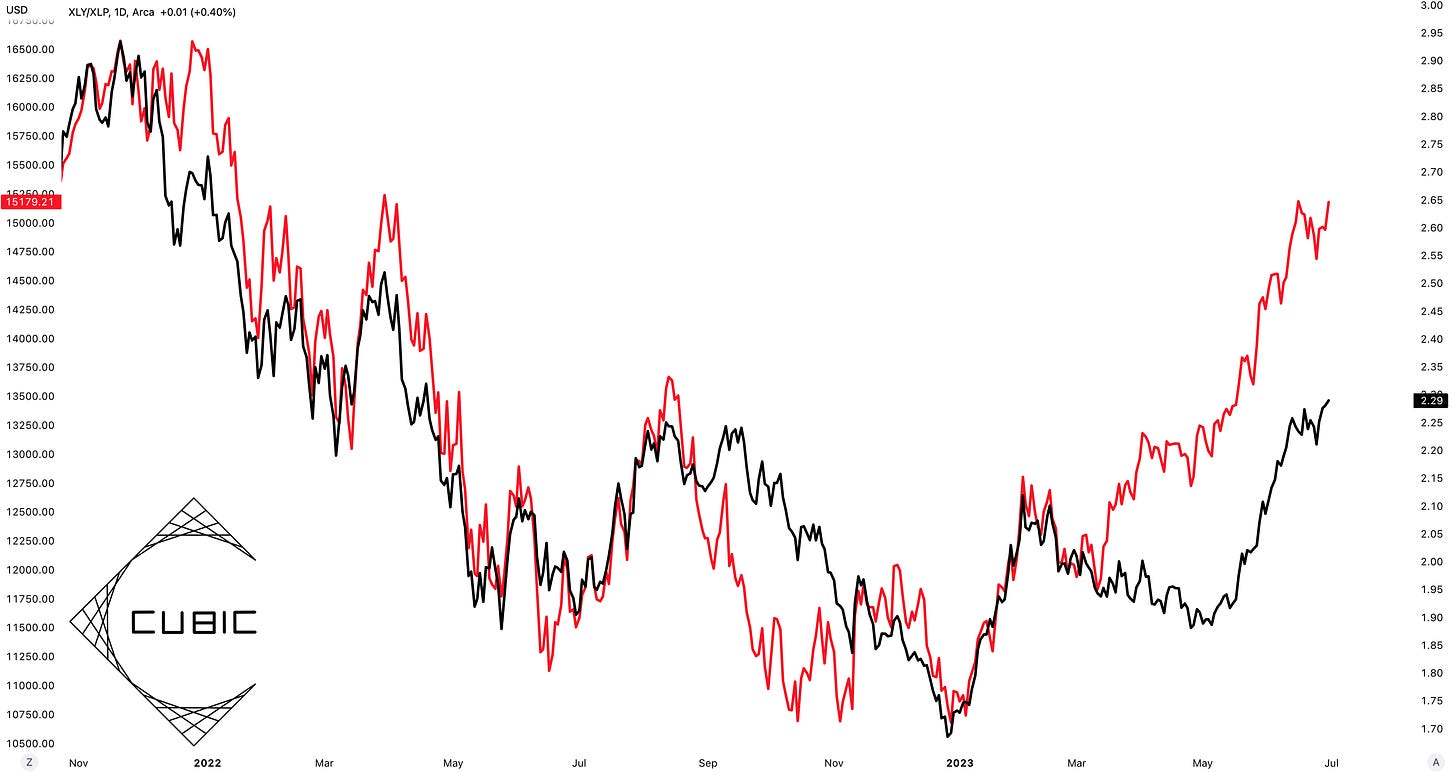Investors,
Consumer discretionary stocks ($XLY) are trading at new 52-week highs relative to consumer staples ($XLP), an important measure for confidence in the U.S. consumer.
If investors were worried about the U.S. consumer, therefore shifting their portfolios into a defensive stance due to potential economic weakness, this ratio of XLY/XLP would be falling. Given the concerns about the fundamental economy in 2022, we can see that this ratio was steadily declining throughout the year and bottomed in the 11th hour of 2022. Upon the bank failures/shutdowns that occurred several months ago, we can see that this ratio declined as investors became fearful about the ripple effects that could impact the broader economy. Those impacts have been avoided, therefore resulting in a resurgence of this ratio to new 52-week highs.
To put it simply: investors have faith in the U.S. consumer right now.
Maybe these investors will look foolish in 1, 3, 6, or 12 months down the line. The amazing thing about the market is that it forces people to put their money where their mouth is. If investors are correct, they’ll be rewarded. If they’re incorrect, they’ll lose.
When I look at this chart of XLY/XLP, I was eerily reminded of the Nasdaq-100:
Turns out, my gut was pretty on-point.
Local peaks & troughs have occurred roughly at the same time, though it’s worth noting that the Nasdaq-100 was “off to the races” much sooner than XLY/XLP in March 2023 and has been ripping higher since then. Either way, both have been in new uptrends since December 2022, producing higher highs and higher lows for the past 6+ months.
Similar to other developments that I’ve been sharing over the past three months, this is not bearish. In the remainder of this report, I’ll cover more broad-based market dynamics, sharing a qualitative and quantitative perspective for why stocks have done so well this year, in addition to the key internal metrics for the S&P 500!





